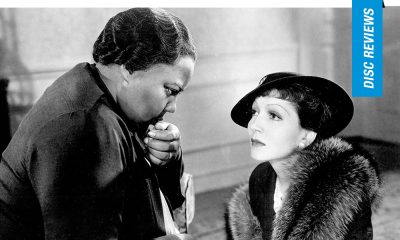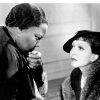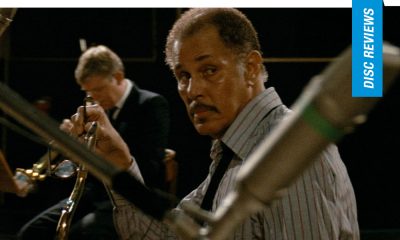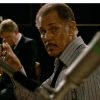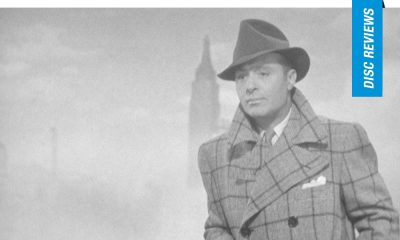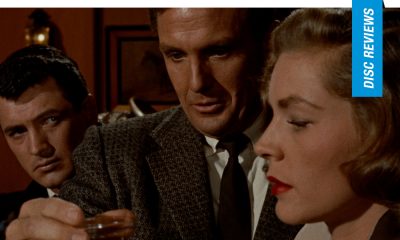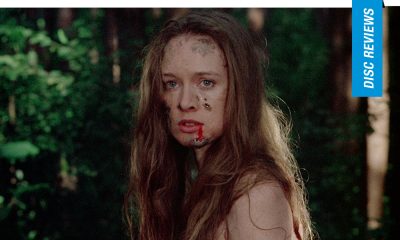Disc Reviews
Criterion Collection: Three Outlaw Samurai | Blu-ray Review
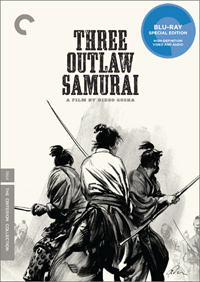 Three Outlaw Samurai, newly available on a gorgeous blu-ray disc from Criterion, is a rousing action adventure from 1964. Directed by Hideo Gosha, a talented cinematic storyteller who earned his stripes in the pressure cooker of TV drama, the film is a fine example of the classical moral and ethical conflicts that drive the samurai genre. Unlike Kurosawa or Kobayashi, Gosha did not see his flashy swordsmen as vehicles for orphic commentary on the human condition, but symbols of traditional notions of honor, and presented their stories firmly grounded in machismo-laden objectivity. Often compared to Sam Peckinpah, Gosha’s briskly paced katana operas are frequently drenched with sweat and assorted other bodily fluids. But Gosha is not interested in violence for its own sake, but as an inevitable consequence of his competently constructed and efficiently executed scenarios. If Kurosawa is the Stanley Kubrick of the Samurai genre, then Gosha is its Alan Parker.
Three Outlaw Samurai, newly available on a gorgeous blu-ray disc from Criterion, is a rousing action adventure from 1964. Directed by Hideo Gosha, a talented cinematic storyteller who earned his stripes in the pressure cooker of TV drama, the film is a fine example of the classical moral and ethical conflicts that drive the samurai genre. Unlike Kurosawa or Kobayashi, Gosha did not see his flashy swordsmen as vehicles for orphic commentary on the human condition, but symbols of traditional notions of honor, and presented their stories firmly grounded in machismo-laden objectivity. Often compared to Sam Peckinpah, Gosha’s briskly paced katana operas are frequently drenched with sweat and assorted other bodily fluids. But Gosha is not interested in violence for its own sake, but as an inevitable consequence of his competently constructed and efficiently executed scenarios. If Kurosawa is the Stanley Kubrick of the Samurai genre, then Gosha is its Alan Parker.
The first of the “outlaws” we meet is Sakon Shiba (Tetsurô Tanba), a wandering ronin plodding alone through a muddy field. He comes upon an old grist mill and, thinking it abandoned, decides the creaking structure would make a fine accommodation for the night. But inside Shiba discovers three starving farmers nervously guarding a bound hostage; the local magistrate’s daughter (Miyuki Kuwano). Tall and imposing, Shiba listens to the farmers’ explanation with a surprising air of bemused detachment – his character could serve as a model for Clint Eastwood in High Plains Drifter – and decides the farmers’ actions, if not completely just, at least don’t require his immediate intervention.
In this smartly fashioned opening sequence, Gosha has established the film’s core conflict of class struggle, created a mysteriously intriguing hero and placed audience sympathies squarely with the underdog. And there’s still a ways to go on reel one. Three Outlaw Samurai was Hideo’s first theatrical feature, but it’s clear he retained a TV director’s discipline of working in proscribed durations. In fact, the film’s pacing, particularly during these expository sequences, feels much like an hour-long television episode. Viewers of a certain age will detect a spot on resemblance to the cowboy dramas of the 1950s and 60s, both in terms of mood and quick immersion of a wandering hero into a sticky local situation. As a counterbalance, the scene shifts to the Magistrate’s office, where an immediate contrast is hammered home. The Magistrate (Tatsuya Ishiguro) basks in a life of privilege, with a phalanx of warriors at his beck and call, in sharp relief to the desperate straits of his peasant subjects.
A bloody revolt is put on a slow simmer, pitting the scruffy farmers against the powerful elite. The smart money is on the Magistrate and his army of paid killers, but Gosha slowly reverses the odds by adding some ballast to the peasant’s side of the scale. Through a pattern of betrayal and shifting alliances, the Magistrate’s blasé master swordsman Kikyo (Mikijio Hira) begins to recoil at his employer’s treachery, while a Sancho Panza-esque pudgy ronin (Isamu Nagato) adds comic relief and a lightning fast spear to the proceedings. United with Shiba, this unlikely trio, bound by the samurai code of honor, becomes stalwart defenders of the working class, setting up a climactic conflict straight out of the John Ford playbook.
Disc Review:
Coming from the world of television, if Gosha was intimidated by the film’s 2.35:1 frame it doesn’t show. Three Outlaw Samurai features a wealth of exquisitely composed scenes, and the aspect works extremely well as a tableau for the film’s highly choreographed swordplay. And while this may not be the most important film Criterion has ever released, it certainly ranks as one of their best hi-def transfers. The faces of Gosha’s sweaty heroes emit an ethereal glisten, while the inky shadows of his interiors retain clarity and spectacular detail. Sharpness is excellent without the introduction of excessive grain, and the transfer’s cleanliness is beyond reproach.
The mono soundtrack is top shelf as well, with good clarity and quietness. Toshiaki Tsushima’s score, a potent blend of traditional Japanese instrumentation, orchestral melodrama and the bucolic musings of Percy Grainger, sounds robust and provides vital narrative propulsion.
Trailer
The film’s trailer is a rather lurid affair, taking self congratulatory hyperbole to a new level. Watch for a shot of Gosha rushing into a scene to demonstrate the proper method of holding a two-handed killing sword. Clad in supercool Ray-Bans, this supposed candid of Gosha at work is amusingly contrived.
A booklet featuring an essay by film critic Bilge Ebiri
This eight page inclusion features some lovely calligraphic-style illustrations from the film. Ebiri’s well researched essay gives Three Outlaw Samurai perspective within samurai genre films, and cites its influence on future works. Production credits and notes on the transfer round out the edition.
Final Thoughts:
Devotees of feudal Japanese swordplay will find the rarely seen Three Outlaw Samurai a valuable edition to the lexicon, while more casual viewers can appreciate the film as an engaging adventure yarn. Substituting swords for six-shooters, Three Outlaw Samurai follows a shop worn narrative path familiar to fans of classic American Westerns, but repackages the violent heroics of rugged individuals as cathartic morality in fresh and appealing settings. It is not a film that takes itself too seriously, nor does it pretend to be rife with profound commentary on the meaning of life. It is a simple, straightforward entertainment, delivered with admirable skill and high levels of craft. Hideo Gosha’s blue collar, lunch pail aesthetic is the perfect realization for this grimy tale of former warriors who have lost everything but their courage, honor and thirst for justice.



